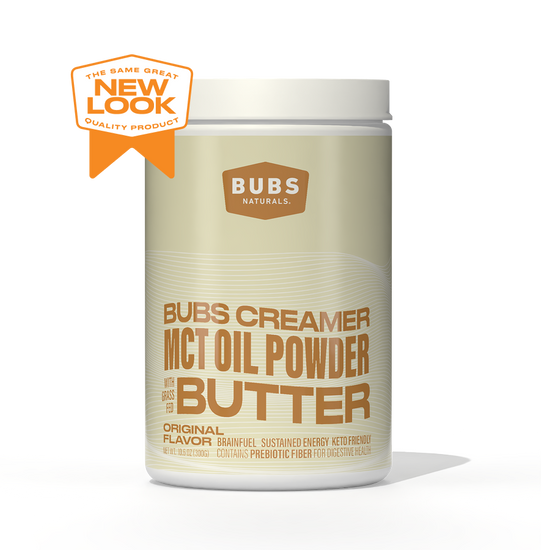Table of Contents
- Introduction
- Understanding Non-Dairy Creamers
- Tips for Whipping Non-Dairy Creamers
- Recipe Ideas Using Whipped Non-Dairy Cream
- Conclusion
Introduction
Have you ever found yourself dreaming of a fluffy, creamy topping for your desserts or beverages, only to realize that traditional dairy options are off the table? Whether due to dietary restrictions, lactose intolerance, or a preference for plant-based choices, the quest for a delectable whipped topping can feel daunting. But here's a question that many of us have pondered: Can you whip non-dairy creamer?
In recent years, the rise of plant-based diets has brought an abundance of alternatives to traditional dairy products, including non-dairy creamers made from almond, oat, soy, and coconut. While these options provide a creamy texture for coffee and recipes, their ability to be whipped into a fluffy topping is often a topic of debate. In this blog post, we will delve into the world of non-dairy creamers, explore which ones can be whipped, and share some tips and tricks to achieve that perfect fluffy texture.
By the end of this post, you will have a comprehensive understanding of non-dairy creamers, their whipping potential, and some delightful recipes to try. We will also highlight our commitment at BUBS Naturals to provide clean, functional supplements that support healthy, active lifestyles—so you can enjoy your favorites guilt-free. Let’s embark on this culinary adventure together!
Understanding Non-Dairy Creamers
What Are Non-Dairy Creamers?
Non-dairy creamers are plant-based alternatives to traditional dairy cream. They are commonly used to enhance the flavor and texture of coffee, tea, and various recipes. These creamers can be made from a variety of ingredients, including:
- Nuts: Almond, cashew, and macadamia nut-based creamers are popular for their rich, creamy texture and nutty flavor.
- Seeds: Hemp and sunflower seed creamers offer nut-free options for those with allergies.
- Coconut: Coconut milk and cream are often used for their natural sweetness and creaminess.
- Grains: Oat and rice-based creamers provide a mild flavor and smooth consistency.
While these creamers serve as excellent substitutes for dairy, their ability to be whipped into a stable foam varies significantly.
The Science of Whipping Cream
Whipping cream requires a certain fat content to incorporate air and create a stable foam. Traditional heavy cream contains about 36% fat, which is essential for achieving that light and fluffy texture we all love. When whipped, the fat molecules trap air, forming a stable structure that holds its shape.
In contrast, many non-dairy creamers are lower in fat and may contain stabilizers or emulsifiers that can affect their whipping capability. For instance, some almond or oat-based creamers may have a fat content closer to 10-15%, which is insufficient for whipping.
Can You Whip Non-Dairy Creamer?
The answer to the question of whether you can whip non-dairy creamer is dependent on the type of creamer you choose. While traditional non-dairy creamers may not whip well, there are specific products designed explicitly for whipping. Here’s a breakdown:
-
Coconut Cream: This is one of the best options for whipping. When chilled, the cream separates from the liquid in a can of full-fat coconut milk, allowing you to whip it into a fluffy topping. However, it does carry a coconut flavor, which may not suit all recipes.
-
Soy and Almond Creamers: Some brands offer soy or almond-based creamers that are specifically marketed as "whippable." These products often contain added stabilizers to enhance their whipping ability, making them a great choice for those looking for a non-dairy whipped topping.
-
Aquafaba: This is the liquid from canned chickpeas, and surprisingly, it can be whipped into a fluffy foam that mimics whipped cream. It’s an excellent option for those avoiding both dairy and coconut.
-
Commercial Non-Dairy Whipping Creams: Some brands produce non-dairy whipping creams made from a blend of plant-based ingredients that can be whipped to create a stable foam. Always check the packaging for instructions and fat content.
Key Factors Affecting Whipping
When attempting to whip non-dairy creamers, several factors will influence your success:
-
Fat Content: Higher fat content is crucial for stability. Aim for products with at least 20% fat for the best results.
-
Chilling: Ensure that your non-dairy creamer is well-chilled before whipping. Cold temperatures help the fat solidify and facilitate whipping.
-
Equipment: A stand mixer or hand mixer works best for whipping. Make sure your mixing bowl and beaters are clean and cold to prevent any interference with the whipping process.
-
Stabilizers: Some non-dairy creamers contain stabilizers that can help maintain the foam once whipped. Look for these in the ingredient list if you plan to make your topping ahead of time.
Tips for Whipping Non-Dairy Creamers
Choosing the Right Product
As mentioned, not all non-dairy creamers are created equal. Here are some types to consider:
-
Coconut Cream: Use full-fat canned coconut milk. Chill it overnight, then scoop out the solid cream and whip it until fluffy. Adding a touch of vanilla extract or powdered sugar can enhance the flavor.
-
Whippable Soy or Almond Creamers: Look for products labeled as "whippable." These are often fortified with stabilizers and can achieve a fluffy texture similar to dairy cream.
-
Aquafaba: For a unique twist, drain a can of chickpeas and whip the liquid with cream of tartar until stiff peaks form. Sweeten with sugar and flavor as desired.
Whipping Techniques
-
Chill Everything: Place your mixing bowl and beaters in the freezer for about 15-20 minutes before whipping. The colder, the better!
-
Add Sweeteners and Flavorings: If you prefer a sweeter topping, add powdered sugar gradually while whipping to achieve your desired sweetness. Vanilla extract, cocoa powder, or flavored syrups can also be incorporated for extra flavor.
-
Watch for Peaks: Whip until soft or stiff peaks form, depending on your preference. Be careful not to over-whip, as this can lead to a grainy texture.
-
Storage Tips: If you have leftover whipped non-dairy cream, store it in an airtight container in the refrigerator. Some whipped versions may lose their fluffiness over time, so it's best to enjoy them fresh.
Recipe Ideas Using Whipped Non-Dairy Cream
1. Vegan Chocolate Mousse
Ingredients:
- 1 can of coconut cream (chilled)
- 1 cup dairy-free chocolate chips
- 1 teaspoon vanilla extract
- Sweetener to taste
Instructions:
- Melt the chocolate chips in a double boiler or microwave until smooth. Let it cool slightly.
- In a mixing bowl, whip the chilled coconut cream until soft peaks form.
- Gently fold the melted chocolate and vanilla extract into the whipped cream until fully combined.
- Spoon the mousse into serving dishes and chill for at least an hour before serving.
2. Aquafaba Whipped Topping
Ingredients:
- Liquid from 1 can of chickpeas
- 1/8 teaspoon cream of tartar
- 1/2 cup powdered sugar
- 1 teaspoon vanilla extract
Instructions:
- In a mixing bowl, combine aquafaba and cream of tartar. Beat on high speed until stiff peaks form.
- Gradually add powdered sugar and vanilla extract while continuing to whip until fluffy.
- Serve immediately or store in the refrigerator for later use.
3. Coconut Cream Topping for Desserts
Ingredients:
- 1 can of full-fat coconut milk (chilled)
- 2 tablespoons powdered sugar
- 1 teaspoon vanilla extract
Instructions:
- Open the chilled can of coconut milk and scoop out the solid cream into a mixing bowl, leaving the liquid behind.
- Whip the coconut cream until light and fluffy. Gradually add powdered sugar and vanilla extract.
- Use as a topping for cakes, pies, or fresh fruit.
Conclusion
In conclusion, the ability to whip non-dairy creamers largely depends on the type and composition of the product you choose. While traditional non-dairy creamers may not provide the same results as heavy cream, options like coconut cream, whippable soy or almond creamers, and aquafaba can yield delightful, fluffy toppings for your favorite dishes.
At BUBS Naturals, we believe in celebrating the journey to health and wellness through simple, clean, and effective ingredients. While we focus on supporting active lifestyles with our range of supplements, we also encourage you to explore the world of plant-based alternatives. By trying out these non-dairy whipping options, you can indulge in delicious toppings without compromising on your dietary preferences.
FAQs
1. Can I whip almond milk? Almond milk on its own typically does not have a high enough fat content to be whipped. However, some brands offer "whippable" almond creamers that may work.
2. What can I use instead of powdered sugar? You can substitute powdered sugar with other sweeteners like monk fruit sweetener or coconut sugar, but ensure they are powdered for the best texture.
3. How long can I store whipped non-dairy cream? Whipped non-dairy cream is best enjoyed fresh, but you can store it in an airtight container in the refrigerator for up to 3 days.
4. Can I use non-dairy whipping cream for baking? Yes! Non-dairy whipped cream can be used in baking for frostings or toppings, but be mindful that it may behave differently than traditional whipped cream.
5. Is coconut cream the best option for whipping? Coconut cream is often considered one of the best non-dairy options for whipping due to its high fat content and creamy texture, making it an excellent substitute for traditional whipped cream.
Embrace your culinary creativity and enjoy experimenting with non-dairy options as you explore the delightful world of plant-based cooking!
Written by:

Butter MCT Oil Creamer
BUBS Butter MCT Oil Creamer (formerly Halo Creamer): Scientifically-Backed Brain and Body Fuel
BUBS Butter MCT Oil Creamer is your go-to for clean, fast-acting energy and focus, no crash included. It blends creamy grass-fed butter with fast-acting MCT oil powder (C8 and C10) to kickstart your day and keep you sharp. The MCTs go straight to work, giving your brain a quick boost while the grass-fed butter supports digestion and gut health.
Together, they help curb cravings, keep you feeling full longer, and support steady energy throughout the day—perfect for fueling your mornings or powering through the afternoon slump.
Starts at $36.00
Shop

